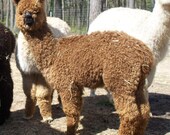For those who have visited our farm and braved the tour into my fiber room, you won't believe this:

My fiber room had gotten out of control. It started sometime last winter, then we had shearing this spring and it got even worse. You couldn't even see the floor it was such a disaster, and I couldn't find what I needed when I needed it.
On Saturday I was down in the fiber room looking for a specific bag of fiber and decied it was as good a time as any to organize things.
I am a bit limited in what I can do down there because our basement is under construction. So, the door and the door frame aren't something I can do anything with right now. But there was so much I could move and pick up, I had let our construction be my excuse.
The dryer that is in there is not being used as a dryer, it is my fiber tumbler. It is not hooked up to heat, and inside there are nails set up to pull apart the fiber which helps get out dirt and debris. I tumble the fiber in there before I flick it to spin it into yarn. And there is a sewing machine in my fiber room. It belongs to my grandmother, a true family heirloom. I put one of my grandmother's blankets over the sewing machine to keep the dust and fiber away.
I didn't have too many options of where to put the bags of fiber, so I lined them up along the farthest wall. I did organize the bags by type of fiber.

On the far left side are the blankets off our older alpacas and all our seconds (seconds would be something like neck fiber). I want to do something with these but haven't decided what yet. I've heard having them made into rugs or socks is a good way to use up this type of fiber.
On top of the chair frames are the bags of fiber that I want to spin. These are the unique blankets, the prime blankets, my favorites!! Animals like Teyha with her beautiful fading fawn colors, or Challenger with his variated grey colors ~ so beautiful! Pretty much all of our grey animals fit this category - Greyt, Tucker, Challenger, Twilight and Rose. Spinning these myself serves two purposes. First, I love them and dream of spinning them. The unique colors and fun patterns are what make me want to spin them (I get bored spinning solid colors). The other reason is that it's harder to have a mill spin these unique blankets because it would be a very small batch, and the mill would mix them up so much you wouldn't see the unique and fun colors anymore. Our plan was for me to spin up these more interesting blankets. Now I know right where to find them!
Then on the far right are the blankets that I want to send to the mill to make into yarn. We have quite a few brown alpacas, and could mix them together for some brown yarn. We also have a lot of fawn, which we could do the same with. I also put our white blankets there. We don't have a lot of white (which we have done on purpose), but I still think I want to send it to the mill (you have to pay more per ounce if you don't have as much of it, you can get a bulk rate for the bigger lots of a color). But the truth is that I HATE to spin up white alpaca. I find the really fine really white fleeces to be a pain to spin. Maybe I would be ok with it if I had it in rovings, but from raw, it's a pain to spin. When they are so fine, it's hard not to over spin them (and end up with a tough rope instead of yarn). And white is so boring to me. I much prefer the variated colors of the fading fawns and greys than the boring white (that spins up off white no matter what I do). I know you can dye white, but that's something I decided early on I didn't want to do. Our focus has always been on the variety of natural color alpacas. We aim to have alpacas in all the colors, so I have a variety of colored yarn straight from our alpacas. Maybe I should sell the white fleece to those who do enjoy dying. I know some people are really good at it and create some incredible fun colors.
Now I feel more motivated to get the bags to mill that I can, and to spin up the bags of unique fiber that I set aside for myself.
































